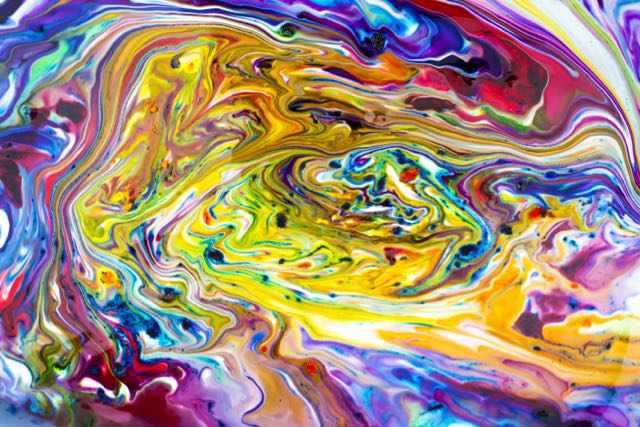A magazine where the digital world meets the real world.
On the web
- Home
- Browse by date
- Browse by topic
- Enter the maze
- Follow our blog
- Follow us on Twitter
- Resources for teachers
- Subscribe
In print
What is cs4fn?
- About us
- Contact us
- Partners
- Privacy and cookies
- Copyright and contributions
- Links to other fun sites
- Complete our questionnaire, give us feedback
Search:
What is creativity?
Geraint Wiggins and Paul Curzon, Queen Mary University of London

Creativity sets us apart from other species. No other animal comes close. There are no elephant Einsteins or parrot Picassos. Suppose we build robots that can be creative, though? If creativity makes us special where does that leave us? Can a machine even ever be truly creative? After all, they are just blindly following their programs. Surely that isn't what creativity is about! But what do we really mean by creativity? We need to decide if we are to write programs that are creative.
For over 400 years we have created a cult around the amazing creativity of revered people: poets, artists, mathematicians and scientists have been put on pedestals. We take Curie and Einstein, Byron and Lovelace, Nightingale and Beethoven and laud them as superhuman geniuses. The problem is that this view of creativity, inherited from the Romantics, is unhelpfully narrow. So what are the elements of creativity that actually matter?
Those people are all amazing, but do their exploits help us understand what we mean by creativity? How do we actually tell if someone is creative? Philosophers have come up with several ways. One is based on historical impact. We know about those revered people because of the impact they had on their specialist areas, and on our lives. They all have a worthy place in the history books. What of people that have been creative in areas that have not been historically important. Does that make them less creative? Defining creativity based on historical impact doesn't help us improve our own creativity or build machines that are creative.
Suppose we take paintings by Picasso and a child. Which is more creative? We hang one in a gallery but not the other, so is that the test? A robot called AARON was designed to paint pictures. It isn't told what to paint. It decides for itself. AARON's art hangs in galleries just like Picasso's. Does that qualify it as more creative than a child? It was following rules about how to paint (its program) written by artist, turned self-taught roboticist, Harold Cohen. Is that being creative like a child painting? Is the programmer the creative one, not the robot?,
By focussing on the programs computers follow it seems it's easy to see that machines cannot be creative. However, Computer Scientists are now creating machine learning systems. Rather than code in specific rules such as how to paint, these programs have rules about how to learn. A program coded this way learns for itself how to paint, and what makes a good painting, perhaps by studying past Masters. It is then much harder to draw a line between humans and machines based on rule-following. If the machine is learning the rules for itself rather than being given them, isn't it being creative?
Novelty Value
Novelty is important. To be considered to be creative, a person (or machine) needs to have created something new. The originator, or others, may then go on to refine that thing, repeatedly improving on it, but that first step is likely to be the step considered the creative one. It may not come at the start. It could be that an existing thing is gradually refined, but then one step is much more imaginative, leading to something totally different to anything before it.
What do we mean by new though? Context matters. A child can be creative, creating something completely new to them, even if it is not new to the human race. That would still be creative. A hunter gatherer in the Amazon, who invents a blade for cutting, but in a culture that has never seen a knife, is creative too, even if to us it seems obvious in our world full of knives. When nothing like that existed it was massively creative to have the idea and see the potential.
Whether we think of something as creative therefore also depends on the observer. Having seen lots of knives we may not think that inventing a blade is creative if we know nothing about the hunter gatherer's society. Similarly the mother of the toddler painting will recognize the creativity, knowing it is a leap forward from anything that child has done before.
The creative value of something therefore depends on several things: the object created (is it new?), who created it (a toddler or a professional artist?), who is observing it (a parent?) and the context of its creation (has anything similar been seen before by that person in that context?)
Everyday Creativity
When we view creativity in this way, everyone is being creative in small ways all the time. Whenever you create a new sentence to express a thought, or think something you have not thought before you are being creative in this sense. Many animals are creative like this, in their own small ways, and machines can be too. By thinking of creativity like this it is now smaller, but far less mysterious. It gives us the basis for creating programs that can be creative. We need now to think about the processes involved in being creative rather than what it is. Great creativity, like that of Mozart or Bronte, is still great, of course. It's just important not to get hung up on it if you want to be creative yourself (or create creative machines to create for you)!


